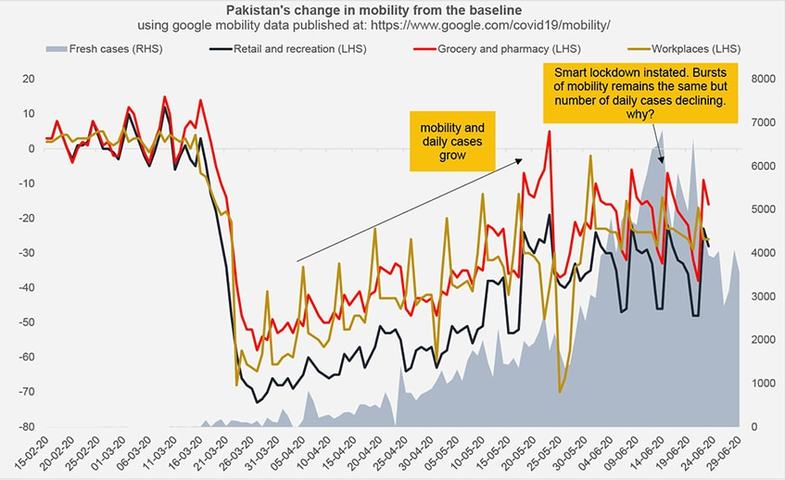Number of daily positive cases in Pakistan are declining—weekly average positive cases dropped nearly 40 percent over the past three weeks. During the week of Jun-14, cumulative weekly tests conducted were over 203,000—the highest testing done in a week ever—which declined to about 158,000 tests by the week of Jun-28. Testing has declined by 16 percent while positivity rate of daily cases has declined by 22 percent between this three-week period. When countries are not testing enough, they are likely to register a higher positivity rate. How is Pakistan’s testing and positivity rate both declining considering its limited testing strategy of tracking symptomatic high-risk cases?

Pakistan’s current positivity rate is about 16 percent, which was much higher –about 22 percent—two weeks ago. The WHO has suggested a positivity rate between 3 and 12 percent as a benchmark for adequate testing. Without testing at this level, it is unlikely for a country to monitor the extent of the spread across the population. Pakistan started to ramp up testing in the first week of June after the push from World Health Organization (WHO) which advised the government to increase testing to 50,000 tests daily—350,000 in a week. Testing started to decline without reaching this WHO-defined benchmark.
The effectiveness of the smart lockdown strategy seems questionable as well. Though mobility data from Google shows mobility has tapered down since Eid holidays where it rapidly increased coinciding with the rising growth in positive cases, it is at the same level as it was right before Eid, even slightly higher. Locality-based lockdown seems to have done precious little to decrease mobility. However, evidently, the number of positive cases have slowly come down.

Lockdown without adequate testing seems to be putting the cart before the horse. Surely, the lockdown strategy itself is driven by real-time data on tested and positive cases. Without really testing, the government cannot know locality wise extent of the spread and cannot effectively implement any kind of lockdown. The second important question is whether the government is underreporting positive cases for not any nefarious reason but to pacify the building pressure on it to address the outbreak. Whether there is any nugget of truth to it, should Pakistanis celebrate the dropping positive covid-19 cases just yet? Let’s hold judgement.




























Comments
Comments are closed.